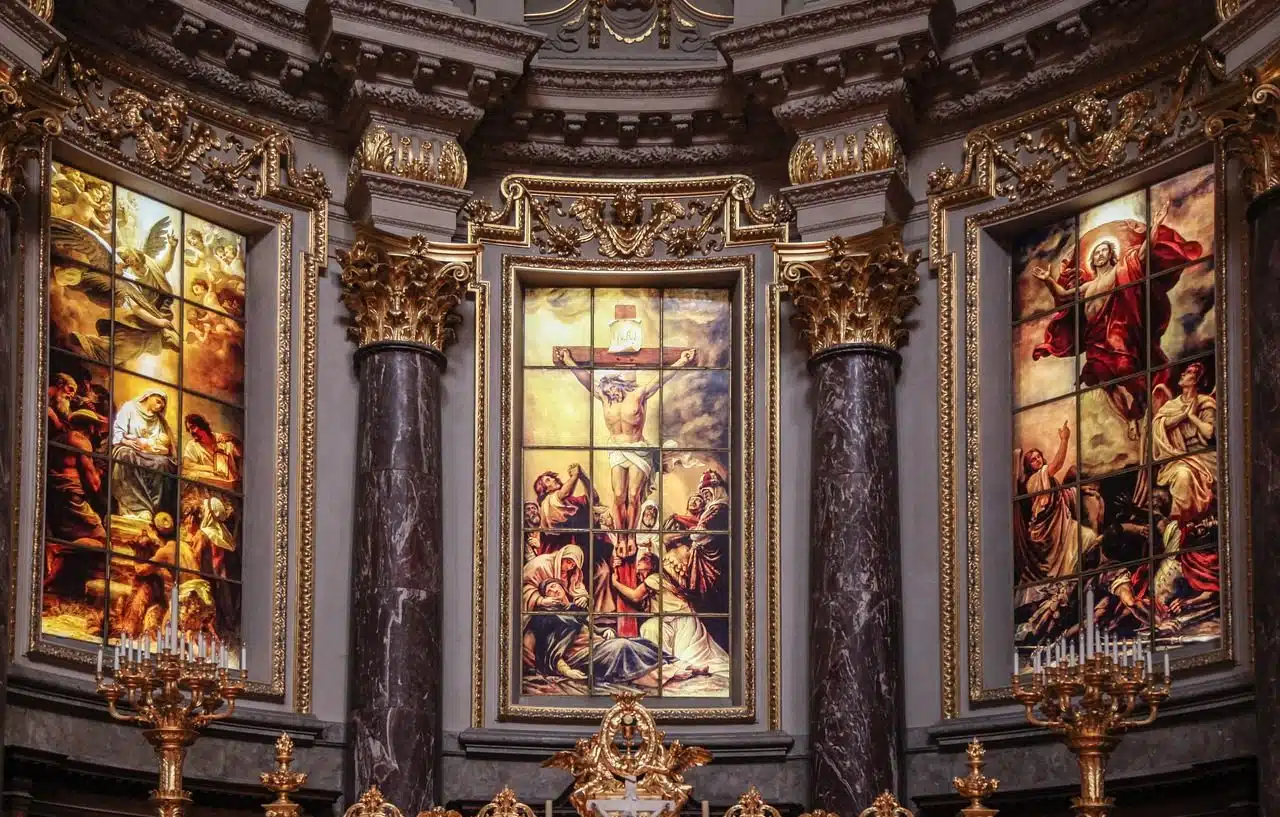
The altarpiece is a decoration element that is part of the altar.
Altarpiece is a term that is currently usually used with reference to a decorative element that is part of the altar . The etymology of the concept takes us to the Latin retaulus , in turn formed by two other words: retro ( "back" ) and tabŭla ( "table" ).
It should be remembered that the altar , in Catholic churches, is the consecrated table or table that the priest uses to officiate the mass. The altarpiece is the architectural element that is located behind it and that can display paintings , sculptures and other decorative components.
Characteristics of an altarpiece
Altarpieces can be built in stone , wood , metal or other materials. In some cases, they are carved and display figures in relief. In others, they provide support for the exhibition of the canvases.
It is common for altarpieces to be divided into different bodies that are separated from each other, horizontally, by moldings. The different vertical sections created by the columns or pilasters, for their part, are known as streets .
Supported on a bench so as not to come into contact with possible moisture from the ground, the altarpieces are usually crowned with a representation of Calvary or God at the top.
Articulated altarpieces , on the other hand, can be opened and closed. This allows them to adopt two different representations.

The altarpieces are divided into bodies.
Some examples
Without a doubt, there are many altarpieces that have become fundamental pieces in the history of art due to their quality, their originality or because they are key works by some of the most important authors in the world. Among the most special and praised are the following:
- Pala d'Oro altarpiece . It dates back to the 10th century , is part of Byzantine goldsmithing and is located in the Basilica of San Marcos in Venice . It was expanded on several occasions, causing it to have a notable Gothic style to a certain extent.
- Main Altarpiece of the Cathedral of Seville . The Flemish sculptor Pedro Dancart was the one who, at the end of the 15th century , proceeded to undertake the creation of this work that, today, is considered the most impressive and valuable in Christendom. It took almost a century to complete, which led to the participation of other illustrious artists such as Jorge Fernández Alemán and Juan Bautista Vázquez the Elder . A total of 45 scenes give shape to it, with “The Ascension of Christ” , “The Assumption of the Virgin” and “ The Birth of Jesus” taking special prominence.
- Altarpiece of the Adoration of the Mystical Lamb . The famous Flemish brothers Hubert and Jan van Eyck are the authors of this work, also known as the Ghent Polyptych , which is located in the Church of Saint John in Ghent . It is one of the most famous and important altarpieces in history and is made up of twelve oil panels.
The altarpieces and the puppets
Beyond this typical element of Catholic churches , an altarpiece can also be a small stage that is used to represent works using puppets .
The term is also used to name the set of figures that, arranged in series, allow a story to be told.
